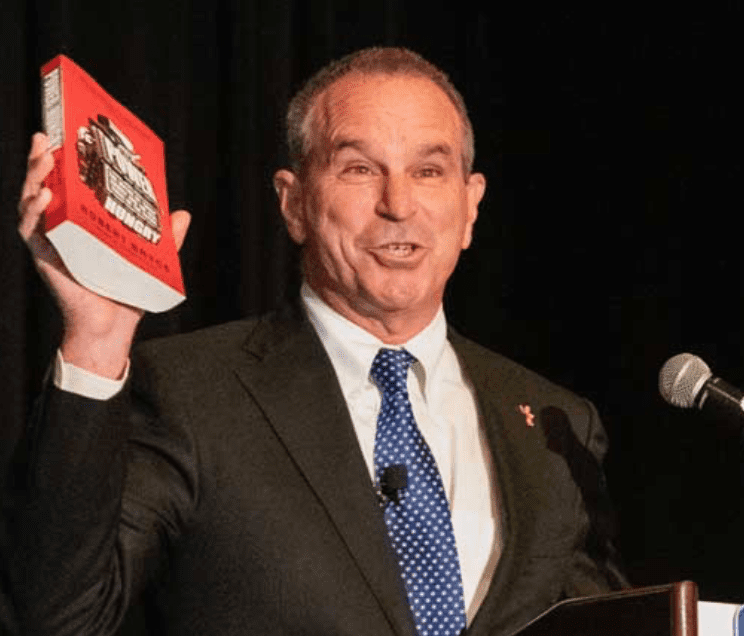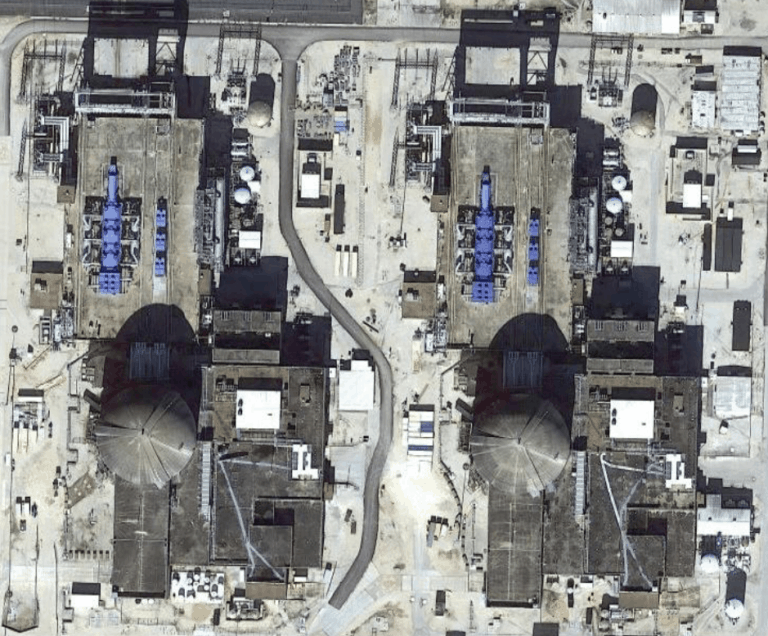Five Myths about the Lone Star Blackout
By Meredith Angwin

When we hear something terrible has happened to someone we know, we are concerned for them. We are worried. We want to help.
And let’s face it, we are also concerned that something like that might happen to US.
Our self-concern often takes the form of a list: “All the reasons this won’t happen to me.”
- I don’t smoke.
- I’m not overweight.
- I have a very new car with safety sensors.
While this self-talk is not a huge deal, the same thing becomes a huge deal when people begin explaining that the Texas blackout was because…well, Texas is Unique. Something like that would never happen to us! And then…. here comes the list.
Five Ways Texas Is Supposedly Unique
The usual list of “why it won’t happen here” is because Texas is Unique, and here are the ways it is unique and how it brought about it’s own problems.
The thesis is simple: Texas is not a warning to us. Texas can merely serve as a bad example of bad choices.
(This section is abstracted from an assortment of pundits in other states.)
These are supposedly the problems unique to Texas.
- Texas isn’t attached strongly to other grids, so the neighbors couldn’t help it.
- Texas didn’t want to be ruled by FERC (Federal Energy Regulatory Commission), so it had all sorts of problems that obeying FERC would have solved.
- Texas doesn’t have a capacity market: such a market would have saved it from blackouts
- Texas didn’t bother to winterize anything on its grid.
- Texas built its market around total freedom for prices to rise. Other markets are more orderly.
As in everything, there is SOME truth in many of these statements, but overall….sorry. I wish Texas was unique. The fundamental problem is the way RTOs (Regional Transmission Organizations) are designed and managed. Two-thirds of the country is in an RTO area. The way things happened in Texas can be the way they happen…in any place that has restructured its electricity markets.
Five Ways Texas Is Just Like the Rest of the RTOs
Let’s go through these myths, one by one
1) Texas goes it alone. Indeed, the ERCOT (Electricity Reliability Council of Texas) area of Texas did choose not to be strongly connected to neighboring grids. However, connection to neighboring grids would not have helped. As I have pointed out in my book, the neighbors are having the same weather you are having. In the case of Texas, several nearby states were also having rolling blackouts due to cold weather. None was as extreme as Texas (where the whole grid almost collapsed) but none would have “shed load” to their own people to ship help to Texas, even if they were completely connected.
2) No FERC oversight. Nobody ever tells me what FERC ruling would have solved Texas’s problems. FERC does not require large reserve margins. FERC does not care whether plants have fuel stored on site. FERC does not require winterization. I am willing to be corrected on this, but if someone would send me a link to the FERC order or FERC ruling that would have saved the Texas grid, that would be great. I also think it would be a miracle, since the order or ruling does not exist.
3) Capacity market! Capacity market! ISO-NE (Independent System Operator – New England) has a capacity market, the total size of which is annually almost as large as the realtime energy market. On page 100 of Shorting the Grid, I show an ISO-NE chart which shows that the energy market in 2018 was 6 billion dollars, and the capacity market was 3.6 billion. Yes, we have a capacity market in New England.
And quite a few chapters in Shorting the Grid are stories of watching ISO-NE try to get plants to live up to their capacity obligations in bad weather. The Winter Reliability chapter, the Jump Ball chapters, the chapter on “harder than it has to be—planning for winter.”
A capacity market would not have helped Texas.
4) Winterize the grid. This was a failure of Texas planning. Sort of. I mean, if they had spent some money on winterization, people would not have died, the grid would have been in much better shape without multi-day power outages, and so forth. I think they should have winterized the grid.
However, this is not a situation unique to Texas. Right here in New England, with our own RTO system, we have lots of drama on the grid in winter. We can look backwards (bridges being raised at rush hour to let oil tankers through) or forward (to many ISO-NE scenarios that include rolling blackouts in the winter of 2025-26.)
In short, everyone should winterize their grids. But each grid will encounter winter conditions that are extreme compared to the usual winters. For that, what you need is a robust grid with (for example) some nuclear plants with fuel stored on site, so the problems of winter do not become grid-wide catastrophes. Just-in-time renewables plus Just-in-Time natural gas is a recipe for the kind of disaster Texas had, and the kind that is embedded in many of ISO-NE’s future scenarios. (As well as California’s oft-repeated summer experiences of rolling blackouts.) Texas is not unique.
5) Total freedom in the Texas market. I think that one advantage of energy-only markets is that the markets basically pay for what the customers pay for (kWh) without the complex MOPR, CASPR, Pay for Performance rules that capacity markets grow. That said, once you have an RTO system, putting caps on how much customers have to pay (California did that in 2001) or not putting much of a cap on what customers have to pay ($9 per kWh in Texas) leads to the same results.
The RTO leads to high prices and rolling blackouts.
As Professor William Hogan of Harvard, one of the architects of the Texas system, said in a recent interview with the Harvard Crimson, the state’s electricity market had “worked as designed.”
Others were upset that rolling blackouts still happened when the auction price was below $9 per kWh. While I am not an economist, it is clear to me that market caps or not, RTOs lead to expensive, fragile grids. It’s not about those crazy people in the Lone State. It’s about the RTO structure.
We defend ourselves
We defend ourselves from the fear that harm can come to us by describing all the ways that we are different from the people (or states) to whom harm has come. This is very human, but not always very useful.
To protect ourselves from future harm, we would be better off looking at how we are similar to people (or states) to whom harm has come, and trying to understand what brought the harm, whether it was a similarity or a difference with our own way of doing things.
Texas didn’t have blackouts because it was unique. It had blackouts because its grid was built on the RTO system. The sooner people understand that fact, the sooner we can do something about the growing fragility of our grids.
Meredith Angwin has invested much of the past ten years developing expertise in grid oversight and governance. For four years, she served on the Coordinating Committee for the Consumer Liaison Group associated with ISO-NE, her local grid operator. She teaches courses and presents workshops on the electric grid.
She is the author of Shorting the Grid: The Hidden Fragility of Our Electric Grid.







Speaking of myths, can anyone in the USA be as straight with the truth as Arjen Lubach? Two videos from the show “Zondag mit Lubach” (Dutch broadcaster VPRO, with subtitles):
Green Energy (is fake):
https://www.youtube.com/watch?v=xW-VLPyxqAM
Nuclear Energy (is great, but taboo):
https://www.youtube.com/watch?v=YjFWiMJdotM
Why don’t we have anyone in OUR media willing to gore those sacred cows?
Being a former engineer for a large power company and having earned a Master of Science in Energy and the Environment, I had PV panels installed five years ago, with my estimated payback of 15-17 years, . . the right thing for an eco-freak to do. Before they could be installed, we acquired a VW e-Golf electric car. The savings in gasoline alone took the solar system payback down to 3 1/2 years. So, we added a used Tesla Model S, P85, and that took the payback down to less than three years, which means we now get free power for household and transportation.
But that is not all: We do not need to go to gas stations, we fuel up at home at night with cheap baseload power. During the daytime, the PV system turns our meter backwards powering the neighborhood with clean local power, which we trade for the stuff to be used that night. If we paid for transportation fuel, the VW would cost us 4 cents/mile to drive, and the Tesla would cost 5 cents/mile at California off-peak power prices.
No oil changes are a real treat along with no leaks. And since it has an electric motor, it needs NO ENGINE MAINTENANCE at all. We do not go “gas up”, or get tune-ups or emissions checks, have no transmission about which to worry, no complicated machined parts needing care.
Thanks George: you have neatly summarized why so many grid operators or public power utilities would vastly prefer their own commercial PV rather than subsidize net-metering. As a net-metering beneficiary, you are able to buy low (off-peak night) and sell high (mid day sunshine). The flip side is the grid operator or power utility must sell low to you and buy high from you. This loss is, of course, passed on to all the other customers not so fortunate to have been able to buy in.
This is, admittedly, precisely the reward-the-rich soak-the-poor circumstance net-metering legislation is designed to promote, and you’d be personally financially irresponsible not to take advantage of it as you are able to do so. I’m not knocking your individual action.
It’s just that this is a Meredith Angwin thread, and I’d be irresponsible not to point out the irony. 🙂
George,
“No complicated machined parts”
Yes there are plenty of complex machined parts in a Tesla (brakes, bearings, steering mechanisms), just not as many as an IC engine. Furthermore, solenoid-driven mechanisms can be just as prone to breakdown as cable or hydraulic devices. I don’t know where you live, but in my neck of the woods, electric cars lose considerable range when driven in the wintertime, much less than the IC engine loses to temperature-driven efficiency losses. People at work who own Teslas are alway evangelizing about them. I drove a coworker’s Tesla and was impressed. However, I will only purchase an EV when they can build an Outback-sized wagon with a comparable range for about the same price and can provide some guarantees regarding winter performance. IC’s make more sense in colder climates.
This is part of why I’ve been driving a PHEV for 8 years now. I do most of my mileage on grid power, but I can fall back to liquid fuel for as much as I need. The only thing lacking is that my car is not “flex-fuel” capable and cannot run on E-85, let alone E-100 or M-100.
Very well written and insightful. Helpful to a hands on, “nuts & Bolts”, startup and test/tune engineer like me. Thank you.
…and here in my inbox is an Amazon request that I review “Shorting the Grid”. And I’ve barely fed Paris yet 🙁
IMO you should do so, but AFTER Meredith has incorporated changes per my feedback. Review the e-book, obviously.
Ed,
I am sure you will feed Paris! I have faith in you!
And after you feed Paris, it would be great if you would review the book on Amazon.
Amazon uses the number of reviews as a guide to how much to promote the book on their website (the “you might also be interested in…” stuff). So we authors are constantly asking for reviews.
Meredith
I appreciate the time you took and the excellent comments you made.
However, I have no plans to issue a new version with corrections at this time. In reviewing your comments, I was happy that they would make the book better. I was also sure that very few people would be misled about the major content of the book due to the things you found. I sincerely thank you for your careful work. But it’s a big deal to release a new edition of a book.
I believe my book is timely and important, though imperfect. I hope people will review the book, now, when Texas and the markets are in the news.
All I can see is that Texas gave the country ENRON a few years back and this recent situation down there was reminiscent of that.
I guess there is no more “spinning reserve” as in times past.
A bit simplistic. ERCOT has plenty of spinning reserve in coal and gas, and some in nuclear and perhaps a bit in newer synchronous wind turbines as well.
Spinning reserve is there to balance minute-by-minute second-by-second fluctuations in load. But a substantial portion of the big spinners — coal and particularly gas — went offline. No spinning reserve will last long under sustained generating loss. It’s just angular momentum stored in the turbines and generators.
Ed Leaver, not the usual definition.
Ancillary services includes frequency control, typically each five minutes. Some generators are paid for this “up a little, down a little” balancing.
In addition the grid operator maintains reserves, including spinning reserve. The spinning reserve comes online if a generator trips off, keeping the total generation in balance with the load.
Typically the total reserve, spinning, warm and cold, used to be 15% of total generating capacity. Recently this has been shaved; ERCOT ran at 7% reserve during last summer’s hot spell when prices briefly exceeded $2000/MWh.
Meredith, you said:
“I am willing to be corrected on this, but if someone would send me a link to the FERC order or FERC ruling that would have saved the Texas grid, that would be great.”
Apparently you are not aware of a comprehensive study done in 2011 by the FERC and the NERC, which examined the root causes of the Texas blackouts that occurred in 2011. You can Google:
“Report on Outages and Curtailments During the Southwest Cold Weather Event of February 1-5, 2011.”
The report includes detailed recommendations calling for the weatherization of electric and natural gas infrastructure in the Southwest. The Texas legislature refused to impose those requirements on its electric and natural gas industries and they were not implemented. What we just saw happen in Texas is a direct result of not implementing those measures.
The NERC enforces resiliency and other operating requirements but it has no authority in Texas because the state is not subject to FERC jurisdiction (which oversees NERC)..
So you are wrong. If Texas had been regulated by the FERC it would have to also comply with NERC standards and those assets would have been weatherized.
@Robert Borlick:
Studies and recommendations are not enforceable orders. Even in areas where FERC has jurisdiction, it has no authority or enforcement mechanism to ensure that generators meet recommendations.
The NERC does have enforcement authority and it is regulated by the FERC. So if FERC wants a standard enforced the NERC will enforce it. NERC has the authority to impose penalties for noncompliance.
When NERC was created in the 1960s it was a voluntary organization, .However, the Energy Policy Act of 2006 changed that and gave FERC authority to establish an entity that enforces mandatory reliability standards. The FERC chose NERC for that role.
NERC relies on regional reliability entities to do the actual enforcement. The regional reliability entity for Texas is the Texas Reliability Entity (TRE).
What is unclear to me is why the TRE didn’t enforce the FERC/NERC recommendations on winterization when the other regional reliability entities did. I assume that this is because the TRE does not have to follow NERC’s directions because Texas is not regulated by the FERC. I may have to research this issue.
A report is not an order. FERC does not enforce resource adequacy anywhere. You sent me a report, which I have seen before. I see no orders or rulings.
No doubt FERC and NERC also noted that California had resource adequacy issues. And that the California transmission infrastructure is subject to failure in hot weather. ( If FERC didn’t notice this stuff, they were nuts.) But they could not order CA to build power plants, keep existing power plants running, build more transmission lines, or do anything else to address those issues.
California is the counter-example. CA is connected to grids all over, and imports power from places like Utah. CA is under FERC jurisdiction. Being under the jurisdiction of FERC gives you some nice reports to put on your shelves, and possibly gives lawyers some ammunition (from those reports) after the fact. But it doesn’t give you a reliable grid.
Resource adequacy is an issue separate from resilience and operational practices. The FERC does not have authority over resource adequacy, which the Federal Power Act assigned to the states. Only state regulators can enforce mandatory reserve margins.
In California the CPUC enforces resource adequacy with respect to the three vertically-integrated investor-owned utilities. The CPUC can order them to build new transmission but only the FERC can set prices for transmission services.
Your view of FERC’s authority its inaccurate; FERC has substantial authority over grid reliability, particularly so in the organized electricity markets such as PJM.
Robert,
You are proving the point that the current system is overly complex without any single person or entity being responsible to make sure that electricity is always delivered to the end customer.
Hi Robert and David,
I totally concur with what David said.
“You are proving the point that the current system is overly complex without any single person or entity being responsible to make sure that electricity is always delivered to the end customer.”
That is, indeed, what “Shorting the Grid” is about.
I think you are misled by what different groups mean by “reliability.” For most of us, it means that the lights go on. For FERC and NERC, it means that the “bulk power system” is not exhibiting signs of overloaded transmission circuits and a few more things under their purview. (And frankly, even if this stuff does happen, as in California, FERC and NERC don’t do much about it.) It’s important to avoid confusing bureacratic definitions with more standard definitions. I was using the standard definition. The grid is reliable when the lights go on.
There was an excellent comment on this issue in my own blog—my post about winter reliability, written long before the problems in Texas.
Look at the fourth comment on my post. This comment quotes from the NERC definition of reliability standards and then notes:
“Nary a word of the ‘reliability’ or ‘quality of service’ delivered to a retail end user.”
Here’s the post.
https://meredithangwin.com/reliable-electricity-in-winter-ferc-are-you-listening/
Appreciate the good insights, and it’s true that could happen in most any market because they all have similar shortcomings. CA’s rolling blackouts last summer that amounted to 2 days with a hour or 2 shutoff for 2% of the states customers were the result of not spending the money on infrastructure/capacity and because the heat spell was unprecedented coving the entire western US there was little electricity available for import.
The bottom line is similar to Texas not spending money on weather proofing. Energy deregulation has gotten to the point where dangerous blackouts occur during extreme weather events because it’s just no profit for utilities and energy suppliers to meet demand for events that happen once every few years.
But the paradigm today has shifted, so solving the issue is different if we are to have the most reliable economic electricity system and grid. Each region can build for the worst events at high cost are as a nation we can build long range high power transmission lines that will allow power to be transmitted across the nation and continent. This is more economical each year as we add renewables, because the sun and wind may not shine and blow 24/7 in any given location, but they do blow or shine (incredibly reliably) 24/7/365 across the continent. Just makes dollars and sense to be able to transmit that energy the same way we do today shipping oil and coal to each state. The difference is transmission of electricity is very cheap to do in comparison to shipping fossil fuels and it’s not fraught with environmental concerns.
Their wasn’t much excess wind electricity in the mid west during Texas cold spell, but out west and in the southeast there was plenty of excess electricity.
Around here, Vermont, people lie down in front of the bulldozers to stop transmission lines from being built, especially transmission lines that won’t help the local community. For example, to get power from Canada to Boston means the lines must go through Vermont or New Hampshire. And Vermont and New Hampshire won’t benefit from those lines. I have lived here for almost twenty years, and they are still talking about building those lines, and litigating about it, and about four different routes have been proposed, and so forth.
Perhaps you can persuade people to welcome transmission lines. When you do, I will take the cross-country lines seriously.
Transmission of electricity is NOT CHEAP. mmIt is far cheaper to ship energy in the form of natural gas than to move electrons long distances. And people oppose building new transmission lines, which are unsightly.
Indepedence01776:
A transmission line often (mostly) passes through private property and you are not allowed to build near it due to the easement. This means that a nice 3 acre lot can become a 1 acre lot that is essentially unusable but you still need to pay the property taxes on the whole 3.
So the cost of transmitting that electricity is shifted to a degree to the tax payers / property owners whose land is taken under eminent domain (forced into an easement) but who still pay for the “use” of that property through taxes.
Again, there is NO need to transmit electricity long distances. We can build power generation in every community. I used to live in a town of about 30,000 with many factories. They had a local 15 MW coal plant that was in excellent condition. They had stopped using it since they could get grid electricity and the coal was polluting. But they were looking to try to burn other fuels that would be cleaner. A clean power plant that outputs 15 to 20MW would be welcome in many communities.
I agree. Local micro grids are a better solution than crisscrossing the countryside with transmission lines. The electricity they produce is more expensive than that produced by utility scale plants but the provide more resiliency so the higher cost may be justified. And the cost of small scale generation is coming down. Hopefully, the new generation of small modular reactors being developed will go a lon way toward providing cheap, clean energy at the local level.
Ms. Angwin
Thank you for the article and the book.
I am confused about winterization and electrification. Did parts of the Texas gas distribution system freeze because auxiliary equipment like pumps were electrified and had no grid independent power or did it just freeze?
I was born in North Alabama and now live in Washington. I only like two things about FDR, TVA and BPA.
Steve,
Basically, I don’t know.
I think it was a little of both. Some pumps were definitely electrified, and so when they could not get electricity, they couldn’t move gas through the pipelines. Which meant that some other power plants could not get gas and therefore could not make power. This is the sort of vicious cycle that nobody wants!
But I believe that another failure mode also happened: some valves and so forth froze because they were not winterized.
I hope we will eventually know the percentages of one sort of failure and the other. At this point, with lawsuits being filed non-stop, I don’t know how much real information is going to be shared with the public.
Steve,
Thank you for reading my book!
Meredith
The second link in
https://bravenewclimate.proboards.com/thread/705/lcoe-lace
is to the Storage Lab by Oliver Schmidt. There one discovers the very high cost of storage which is infrequently used.
So ERCOT relied instead on JIT, just-on-time, delivery of natural gas. That failed for which one should blaim the Texas Railroad Commission. But nobody charged the TRC with assuring JIT. For that lack fundamentally blaim the state legislature although maybe some rubs off to the Texas Utility Commission.
Blaming the RTO, ERCOT, is wrong although they did make at least two mistakes during the unprecedented emergency. At least they kept the entire grid from collapsing.
That Levelized Cost of Storage link packs a lot of bits into a few very dense figures. Now I have a headache.
Thanks a lot, Dave. 🙁
https://www.storage-lab.com/levelized-cost-of-storage
Microgrids!
I have a nanogrid with my PV system, Tesla batteries, and electric cars.
I am grid-connecteed for benefits to both.
California is turning to microgrids.
https://www.nerc.com/pa/RAPA/ra/Reliability°/020Assessments%2ODUNERC_WRA_2020_2021.pdf
Archived 11 25 20 by CGNP See page 5 of 32 – California has an extremely high natural gas dependency, CA Risk Highlights Page 6.
Page 29 provides details showing the very high natural natural gas dependency for WECC-CA-MX
Texas Blackouts predicted by NERC 2020-11 download and see for yourself CA for Green Nuclear (Archived 11 25 20 by CGNP) Under studied conditions, grid operators would need to employ operating mitigations orenergy emergency alerts (EEAs) to obtain resources necessary to meet extreme peak
demands. Potential extreme generation resource outages and peak loads that can
accompany extreme winter weather may result in reliability risks in MISO, Maritimes,
ERCOT, and WECC-NWPP & RMRG. Furthermore, limitations with the energy
infrastructure that supports generator fuel supplies in WECC-CA/MX and NPCC New
England could pose risk to BPS reliability during extreme events
https://www.nerc.com/pa/RAPA/ra/Reliability%20Assessments%20DL/NERC_WRA_2020_2021.pdf#search=NERC%5FWRA%5F2020%5F2021%2Epdf
Under studied conditions, grid operators would need to employ operating mitigations or
energy emergency alerts (EEAs) to obtain resources necessary to meet extreme peak
demands. Potential extreme generation resource outages and peak loads that can
accompany extreme winter weather may result in reliability risks in MISO, Maritimes,
ERCOT, and WECC-NWPP & RMRG. Furthermore, limitations with the energy
infrastructure that supports generator fuel supplies in WECC-CA/MX and NPCC New
England could pose risk to BPS reliability during extreme events